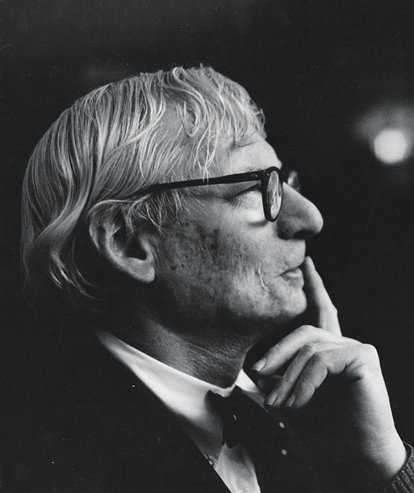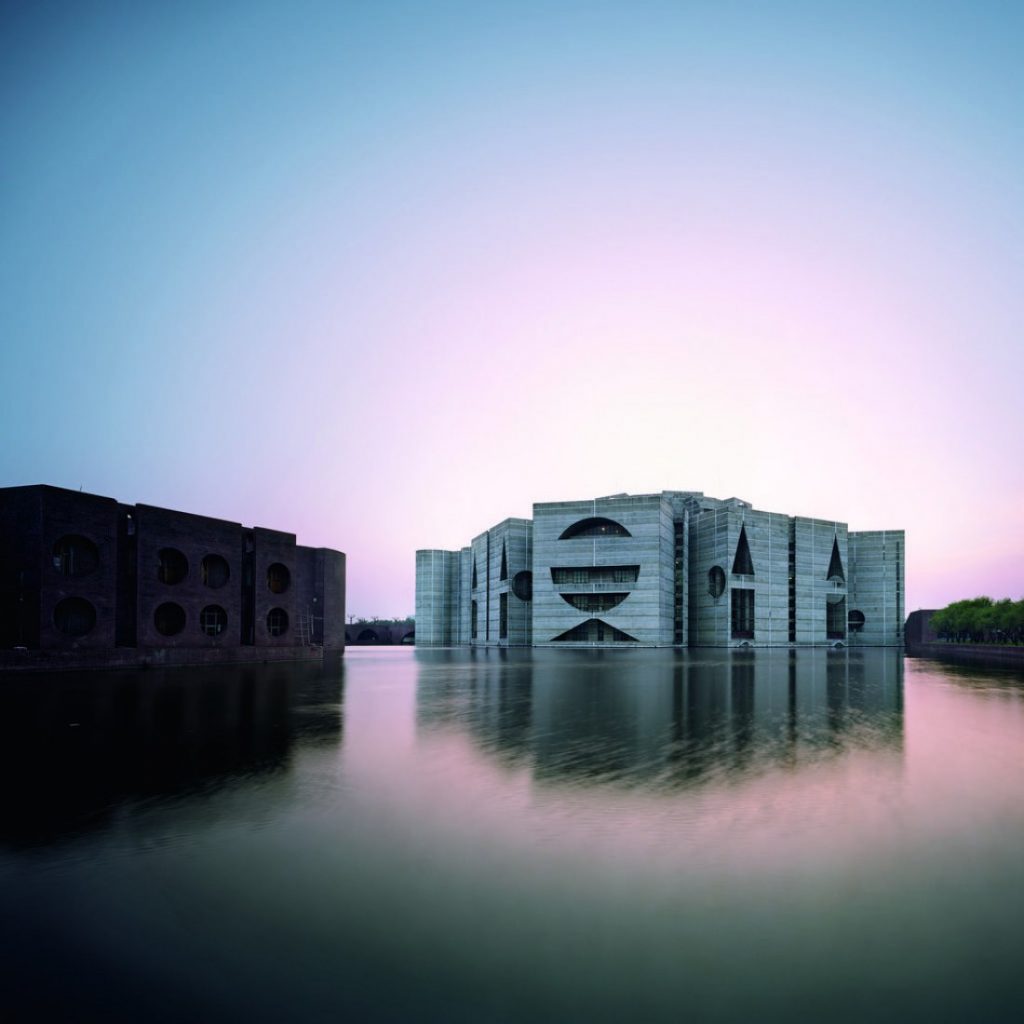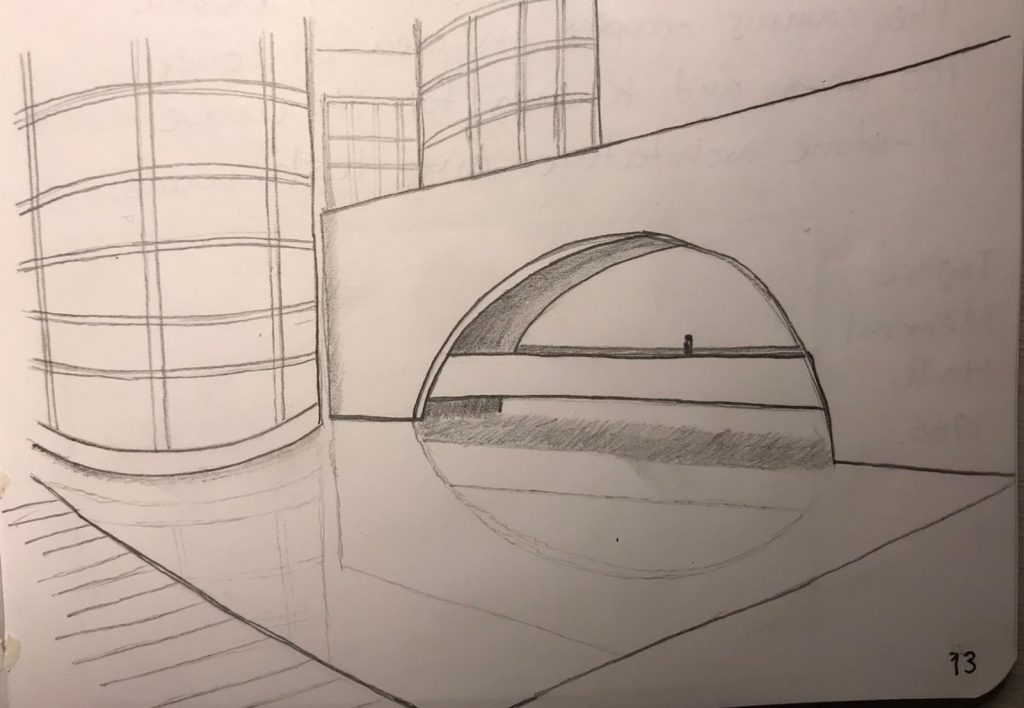Balkrishna Doshi work analysis
I.I.M.
The Indian Institute of Management in Bangalore was designed by the Indian laureate architect Balkrishna V. Doshi. It was finished in 1983, and is distributed in 54,000 sq meters in a 100 acre site. It is designed to be a poly-nuclear building distributed in orthogonal plans, connected with intersecting corridors with triple heights, decorated with gardens.
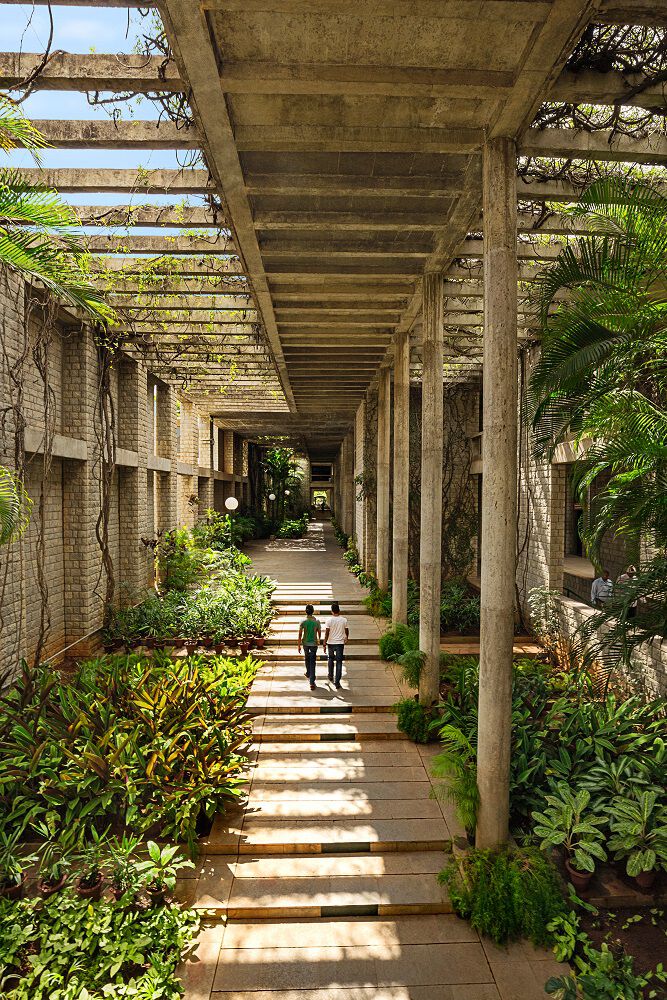
One of its particular characteristics is the landscape design, which is also present in all Dr. Doshi’s work. The external and internal gardens blur the line between outside and inside space, providing the building the sensation of continuity, supported by the relation of vain over solid.
The nods generated by the corridors function as communication cores, both horizontally and vertically, as they connect the upper floors with stairs, and function as core service as well.
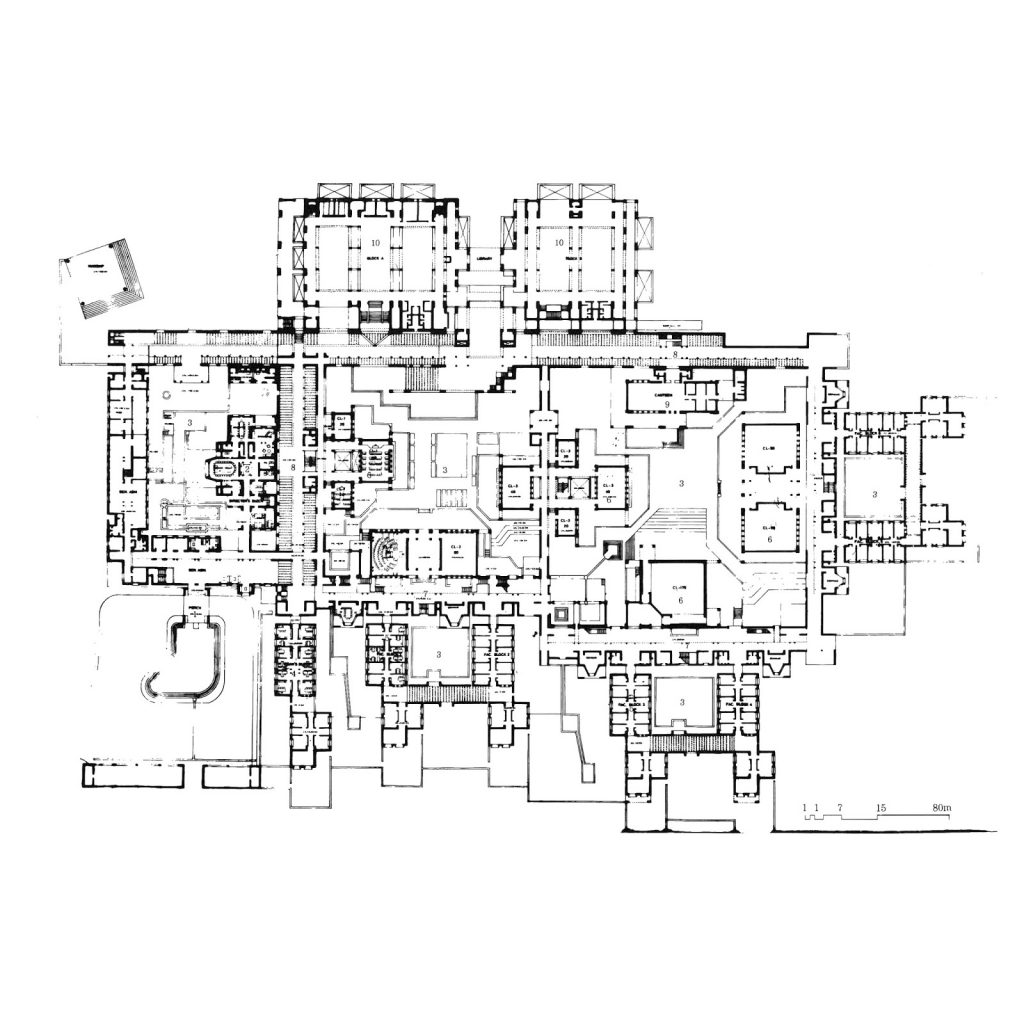
It is a building of contrasts. The use and repetition of the same textures all over the building, the great hard stone made with local granite, and the tall concrete columns, combined with kota stone in the floors, and the few application of black painted steel, makes the building pass almost unnoticed compared to the huge landscape design, made with a great variety of local flora, that provides the building with organic textures against the hardness of the textures in the building. These same textures are embellished by the game that lights and shadow play over them as they move constantly during the day time.
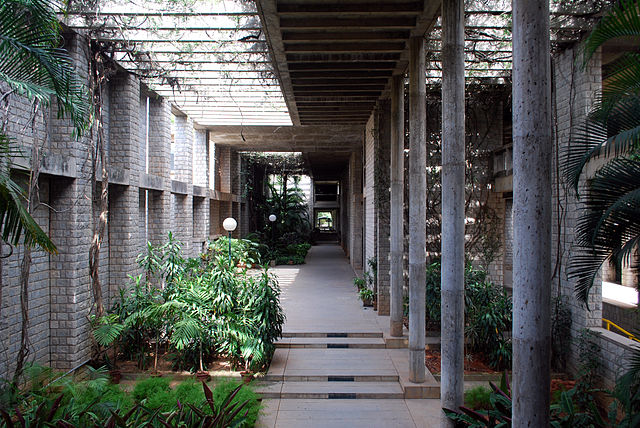
It’s scale may appear huge in photographs, but once is occupied by students in the day to day life, it truly fulfills its function. It is enriched by the shadows and repetition of elements and its orthogonal design, which gives the building a calm rhythm.

“The sun becomes part of architecture” says Dr. Doshi in the movie as he walks through the building, explaining the decisions he made to get to the final design.
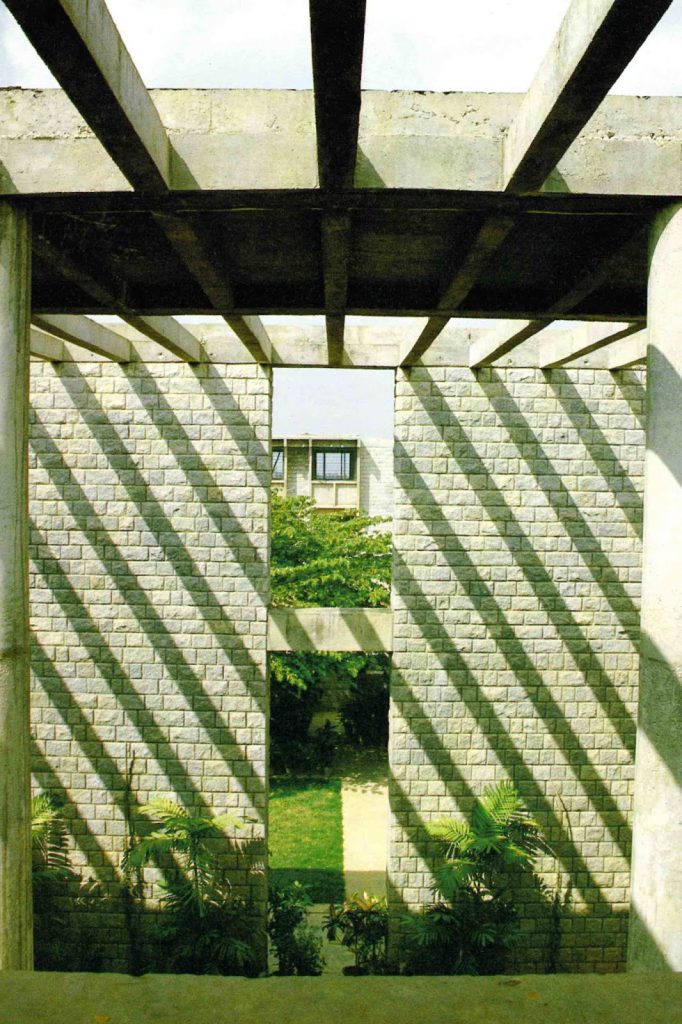
The Indian Institute of Management invites the visitor to feel the spatial experience that fades the interior and the exterior into one, and the environment created by the scale, the use of light and its equilibrated proportion. It is considered the building that proved Dr. Doshi’s personal style, as in his previous work he presented a lot of influence of his masters, Le Corbusier and Louis Kahn. It is in this project where Dr. Doshi meets an agreement between functionalism, use of scale, use of local materials, and influence from ancient Indian architecture.
Bibliography
Think Matter, Indian online editorial that creates content on a curated selection of representative of contemporary practice in India.
https://thinkmatter.in/2019/11/14/indian-institute-of-management-in-bangalore-balkrishna-doshi-vastu-shilpa-consultants/
Indian Institute of Management Bangalore, institutional website.
https://www.iimb.ac.in/
Hidden Architecture, online journal published by a team of architects located worldwide.
http://hiddenarchitecture.net/indian-institute-of-managemen/
